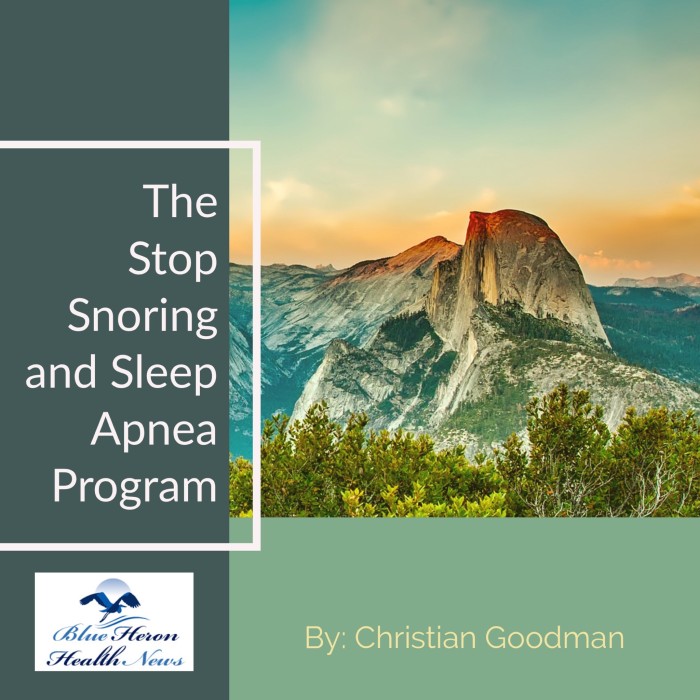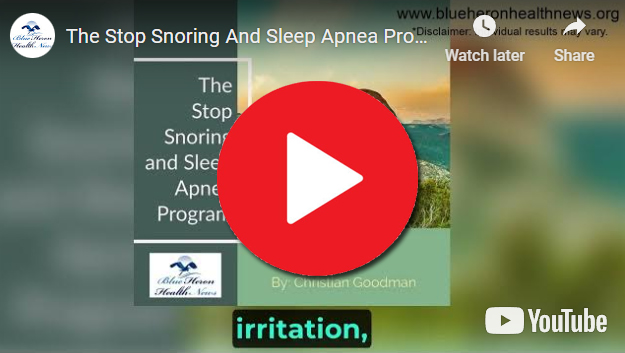
The Stop Snoring And Sleep Apnea Program™ a well-researched program created to help stop snoring and sleep apnea so that you can have a good night sleep. The techniques that you will learn from this program works immediately. It will only take you 3-7 minutes to perform these simple exercises that the author has recommended but the results that you will get will help you have a good night sleep as soon as tonight. Within a week, snoring will be a thing of the past.
What are the common issues with CPAP therapy, and how can they be resolved?
Continuous Positive Airway Pressure (CPAP) therapy is highly effective for treating sleep apnea, but some users may encounter common issues that can affect their comfort and compliance. Here are some of the common issues with CPAP therapy and ways to resolve them:
1. Mask Discomfort or Poor Fit
Issue:
- Discomfort: The mask may cause discomfort, irritation, or pressure sores.
- Poor Fit: An ill-fitting mask can lead to air leaks, reducing the effectiveness of therapy.
Solutions:
- Proper Fitting: Ensure the mask is properly fitted. Work with a sleep specialist or CPAP supplier to find the right size and style.
- Different Masks: Try different types of masks (nasal, full-face, nasal pillows) to find the most comfortable option.
- Adjust Straps: Adjust the headgear straps for a snug but comfortable fit. Ensure the mask is not too tight, which can cause discomfort.
2. Dryness and Nasal Congestion
Issue:
- Dryness: CPAP air can cause dryness in the nose, mouth, or throat.
- Congestion: Some users experience nasal congestion or a runny nose.
Solutions:
- Humidifier: Use a CPAP machine with a built-in humidifier to add moisture to the air.
- Heated Tubing: Consider using heated tubing to maintain the moisture and temperature of the air.
- Saline Nasal Spray: Use saline nasal spray before bedtime to keep nasal passages moist.
3. Difficulty Adjusting to the Air Pressure
Issue:
- Uncomfortable Pressure: Some users find the air pressure uncomfortable, especially at the beginning of therapy.
Solutions:
- Ramp Feature: Use the ramp feature on the CPAP machine, which gradually increases the air pressure over a set period, allowing you to fall asleep more comfortably.
- Pressure Adjustment: Consult your sleep specialist to adjust the pressure settings. An APAP machine, which automatically adjusts pressure throughout the night, may be more comfortable.
4. Noise from the CPAP Machine
Issue:
- Noise: Some users find the noise of the CPAP machine or mask vent disturbing.
Solutions:
- Quiet Machines: Choose a CPAP machine known for its quiet operation.
- Proper Placement: Place the machine on a stable surface away from the bed to minimize noise.
- Soundproofing: Use earplugs or a white noise machine to mask the sound of the CPAP machine.
5. Skin Irritation and Pressure Sores
Issue:
- Irritation: Prolonged use of the mask can cause skin irritation or pressure sores.
Solutions:
- Mask Padding: Use mask liners or padding to reduce pressure and irritation on the skin.
- Regular Cleaning: Clean the mask and cushion regularly to prevent skin irritation from dirt or oils.
- Adjust Fit: Ensure the mask is not too tight and adjust as necessary to relieve pressure points.
6. Claustrophobia or Anxiety
Issue:
- Claustrophobia: Some users feel claustrophobic or anxious when wearing the mask.
Solutions:
- Gradual Acclimatization: Gradually get used to the mask by wearing it for short periods while awake and then gradually increasing the duration.
- Relaxation Techniques: Practice relaxation techniques, such as deep breathing or meditation, before bedtime to reduce anxiety.
- Open Design Masks: Consider using a mask with an open design, such as nasal pillows, which can feel less confining.
7. Dry Mouth
Issue:
- Dry Mouth: Users who breathe through their mouth may experience dry mouth.
Solutions:
- Full-Face Mask: Use a full-face mask that covers both the nose and mouth to ensure effective therapy for mouth breathers.
- Chin Strap: Use a chin strap to help keep the mouth closed during sleep.
- Humidifier: Increase the humidification setting to add more moisture to the air.
8. Aerophagia (Air Swallowing)
Issue:
- Air Swallowing: Some users experience discomfort from swallowing air, leading to bloating and gas.
Solutions:
- Pressure Adjustment: Consult with your sleep specialist to adjust the pressure settings, which can help reduce air swallowing.
- BiPAP Machine: Consider using a BiPAP machine, which provides different pressures for inhalation and exhalation, potentially reducing aerophagia.
9. Removing the Mask During Sleep
Issue:
- Mask Removal: Some users unconsciously remove the mask during sleep.
Solutions:
- Awareness: Practice wearing the mask while awake to get used to it.
- Secure Fit: Ensure the mask fits securely and comfortably to reduce the likelihood of removal.
- Alarm: Use a CPAP machine with an alarm that alerts you if the mask is removed.
10. Compliance and Adaptation
Issue:
- Inconsistent Use: Some users struggle with consistent use of the CPAP machine.
Solutions:
- Education: Educate yourself on the benefits of CPAP therapy and the health risks of untreated sleep apnea to motivate consistent use.
- Support Groups: Join a support group for CPAP users to share experiences and get advice.
- Follow-Up: Regular follow-ups with a sleep specialist can help address issues and improve compliance.
Summary
While CPAP therapy is highly effective for treating sleep apnea, users may encounter common issues such as mask discomfort, dryness, noise, and anxiety. These issues can be resolved through proper mask fitting, use of humidifiers, pressure adjustments, and gradual acclimatization. Addressing these challenges with the help of a sleep specialist can improve comfort, compliance, and the overall effectiveness of CPAP therapy. Regular follow-ups and making necessary adjustments can lead to successful long-term management of sleep apnea.

The Stop Snoring And Sleep Apnea Program™ a well-researched program created to help stop snoring and sleep apnea so that you can have a good night sleep. The techniques that you will learn from this program works immediately. It will only take you 3-7 minutes to perform these simple exercises that the author has recommended but the results that you will get will help you have a good night sleep as soon as tonight. Within a week, snoring will be a thing of the past.